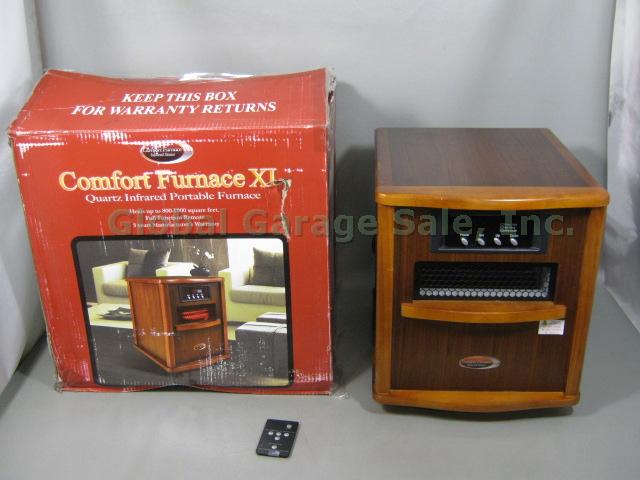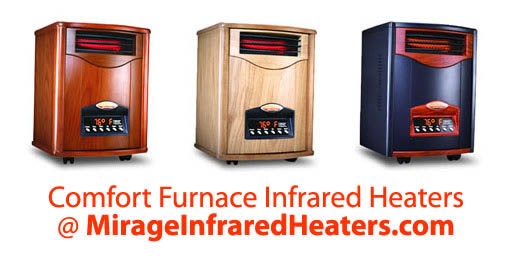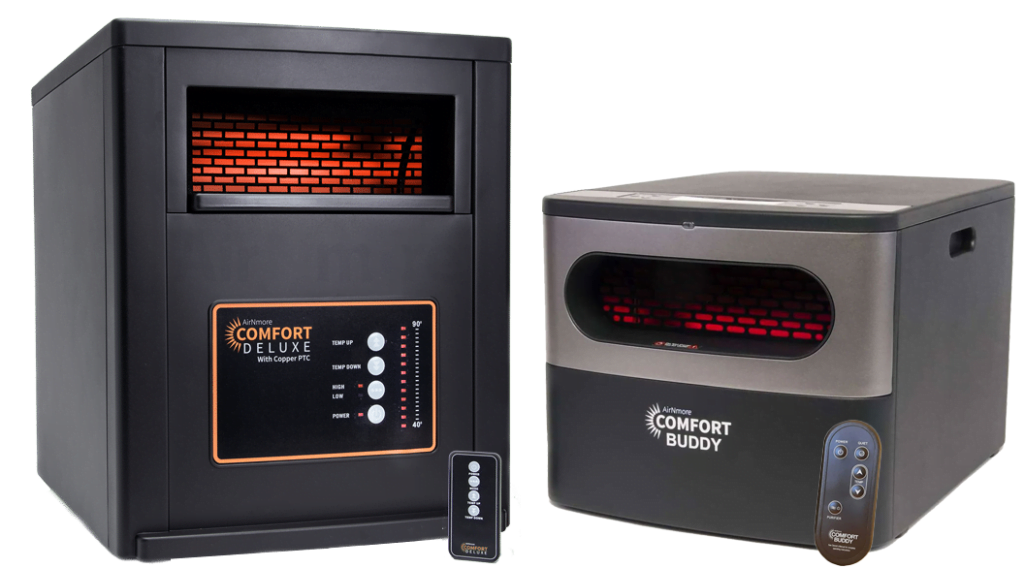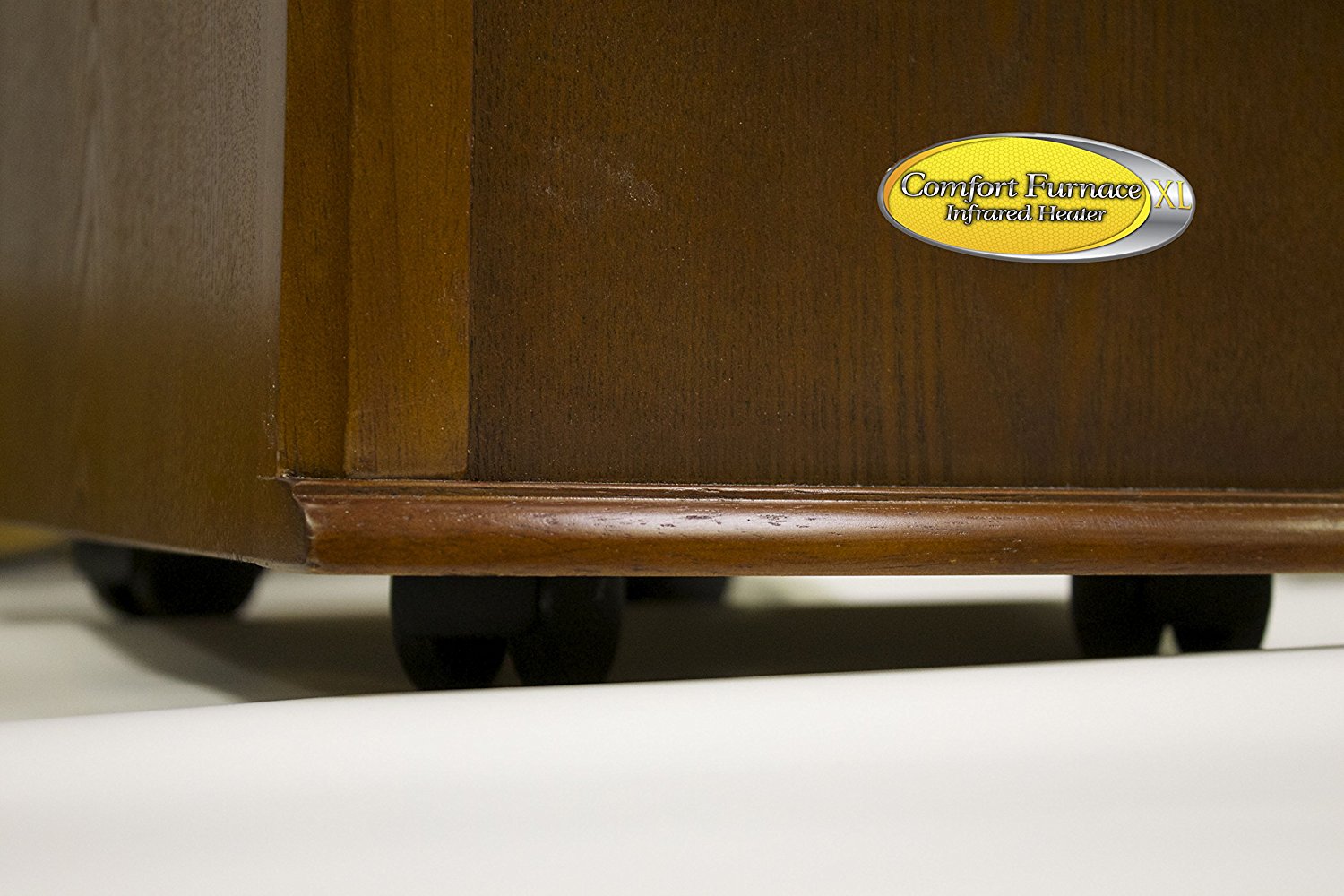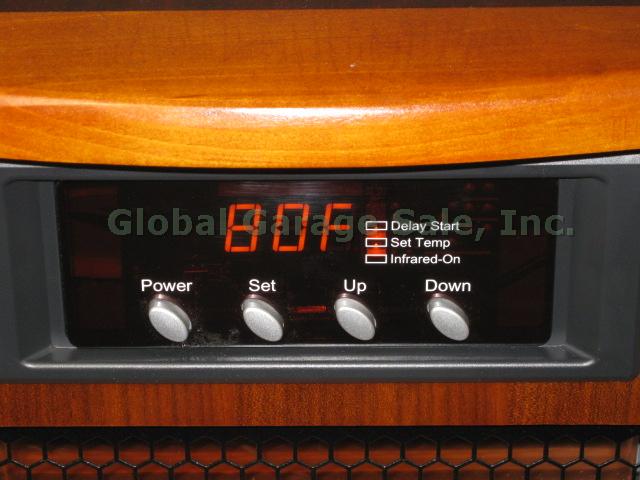Comfort Furnace Xl Infrared Heater
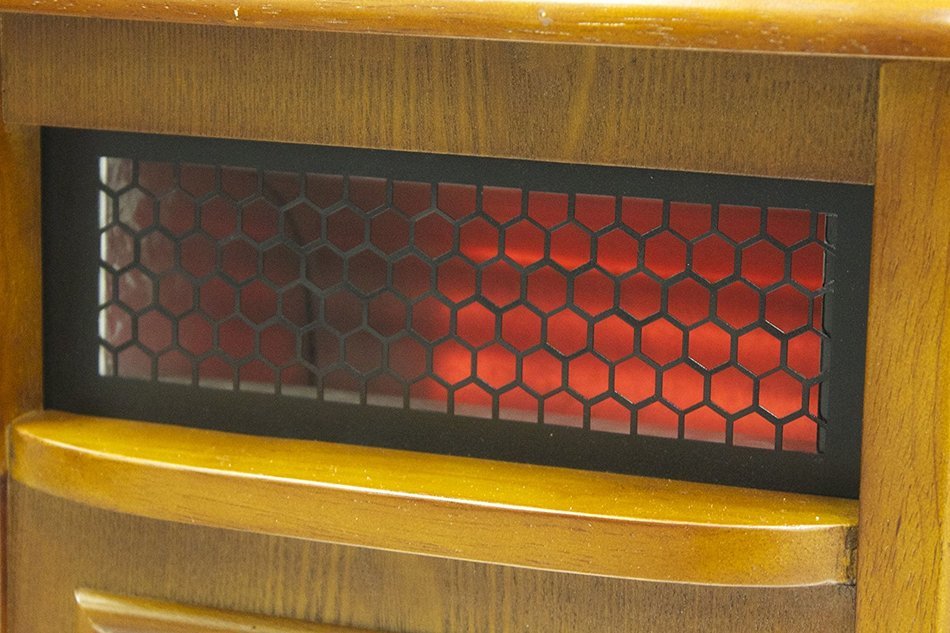
The HVAC (Heating, Ventilation, and Air Conditioning) industry is constantly evolving, with new technologies and products emerging regularly. As HVAC professionals, staying informed about these advancements is crucial for career growth and providing optimal service. This article delves into a specific product, the Comfort Furnace XL Infrared Heater, while also touching upon relevant HVAC career paths, certifications, and industry trends.
Understanding Infrared Heating: A Primer for HVAC Professionals
Infrared heating is a method of heat transfer that relies on electromagnetic radiation. Unlike traditional convection heating, which warms the air, infrared heaters directly heat objects and people within their range. This offers several potential advantages, including:
- Energy Efficiency: In certain applications, infrared heating can be more efficient than traditional methods, as it avoids energy loss associated with heating unoccupied spaces.
- Zonal Heating: Infrared heaters are well-suited for providing localized heating, making them ideal for workshops, garages, or areas within larger spaces.
- Faster Warm-up Times: Because they directly heat objects, infrared heaters can provide a rapid increase in temperature compared to convection systems.
While infrared heating isn't a direct replacement for central heating systems in most residential applications, understanding its principles and applications is valuable for HVAC technicians. It allows them to offer alternative heating solutions for specific customer needs.
The Comfort Furnace XL: Features and Considerations
The Comfort Furnace XL is a portable infrared heater marketed for its energy efficiency and zonal heating capabilities. Typical features often include:
- Multiple Heat Settings: Allowing users to adjust the heat output to their specific needs.
- Digital Thermostat: For precise temperature control.
- Safety Features: Such as overheat protection and tip-over shut-off.
- Portability: Compact design and wheels for easy movement.
As HVAC professionals, we need to move past the marketing claims and critically evaluate such products. Consider these factors when assessing the Comfort Furnace XL or similar infrared heaters:
- Heating Capacity: Match the heater's BTU output to the size of the space it's intended to heat. Overestimating or underestimating can lead to inefficiency and discomfort.
- Safety Certifications: Ensure the product meets relevant safety standards and certifications (e.g., UL listed).
- Customer Reviews: Research customer feedback to gain insights into the product's performance and reliability.
- Maintenance Requirements: Understand the maintenance needs of the heater, such as cleaning or bulb replacement.
Important Note: While portable infrared heaters can provide supplemental heat, they are generally not designed to be the primary heating source for an entire home. Improper use can lead to safety hazards and inefficient energy consumption.
HVAC Career Paths and the Importance of Training
Understanding products like the Comfort Furnace XL is just one aspect of a successful HVAC career. The industry offers a wide range of career paths, including:
- HVAC Technician: Installs, maintains, and repairs heating, ventilation, and air conditioning systems.
- HVAC Installer: Focuses on the installation of new HVAC systems.
- HVAC Service Technician: Specializes in the maintenance and repair of existing HVAC systems.
- HVAC Sales Engineer: Designs and sells HVAC systems to commercial and industrial clients.
- HVAC Project Manager: Oversees the installation and commissioning of large-scale HVAC projects.
No matter which path you choose, formal training is essential. Most HVAC technicians begin with a vocational school program or apprenticeship. These programs provide hands-on training in areas such as:
- Refrigeration Principles
- Electrical Systems
- Piping and Ductwork
- System Troubleshooting
An apprenticeship provides you the opportunity to earn as you learn, providing on-the-job training under the supervision of experienced professionals. Many unions and contractors offer apprenticeship programs.
Salary Expectations in the HVAC Field
The salary range for HVAC professionals varies depending on experience, location, and specialization. According to the U.S. Bureau of Labor Statistics, the median annual wage for HVAC mechanics and installers was $59,620 in May 2023. The top 10 percent earned more than $84,710. Source: BLS.gov.
Experienced technicians with specialized skills or certifications often command higher salaries. For example, HVAC sales engineers and project managers typically earn significantly more than entry-level technicians.
The Value of Certifications
Certifications demonstrate your competence and commitment to the HVAC profession. Some of the most recognized certifications include:
- NATE (North American Technician Excellence): NATE certification is widely respected in the industry and demonstrates a technician's knowledge and skills in specific areas, such as air conditioning, heating, and commercial refrigeration.
- EPA 608 Certification: Required by the Environmental Protection Agency (EPA) for technicians who handle refrigerants. This certification ensures that technicians understand the proper handling and disposal of refrigerants to protect the environment.
- HVAC Excellence: Offers a range of certifications for different skill levels and specializations.
Employers often prefer to hire certified technicians, as it provides assurance of their skills and knowledge. Certifications can also lead to higher earning potential and career advancement opportunities.
HVAC Industry Trends and Future Outlook
The HVAC industry is currently experiencing strong growth, driven by factors such as:
- Increased Demand for Energy Efficiency: Consumers are increasingly seeking energy-efficient HVAC systems to reduce their energy bills and environmental impact.
- Growing Population: Population growth, particularly in warmer climates, is driving demand for HVAC services.
- Aging Infrastructure: Many existing HVAC systems are nearing the end of their lifespan, creating a need for replacements and upgrades.
The Bureau of Labor Statistics projects employment of HVAC mechanics and installers to grow 6 percent from 2022 to 2032, about as fast as the average for all occupations. About 38,000 openings for HVAC mechanics and installers are projected each year, on average, over the decade. All of those openings are expected to result from the need to replace workers who transfer to other occupations or retire. Source: BLS.gov.
Emerging technologies, such as smart thermostats and building automation systems, are also shaping the future of the HVAC industry. HVAC professionals who are proficient in these technologies will be in high demand.
"The HVAC industry offers a rewarding career path for those who are willing to learn and adapt to new technologies," says John Smith, a seasoned HVAC technician and NATE-certified instructor. "By staying up-to-date on the latest trends and certifications, you can ensure a long and successful career."
Examples of Career Trajectories
Let's illustrate potential career pathways with a few examples:
- Entry-Level Technician to Service Manager: An individual starts as an entry-level HVAC technician, gaining experience in installation and basic repairs. They pursue NATE certification and develop strong troubleshooting skills. Over time, they become a lead technician, mentoring junior colleagues. Eventually, they transition into a service manager role, overseeing a team of technicians and managing service operations.
- HVAC Installer to Sales Engineer: Someone begins as an HVAC installer, developing a deep understanding of system design and installation practices. They pursue further education in engineering or sales. Leveraging their technical expertise and communication skills, they transition into a sales engineer role, working with clients to design and sell customized HVAC solutions.
- Technician to Business Owner: After years of experience as a technician, an individual decides to start their own HVAC business. They obtain the necessary licenses and permits, develop a business plan, and build a team of skilled technicians. They leverage their industry knowledge and customer service skills to build a successful and reputable business.
The HVAC Professional's Toolkit: Beyond the Wrench
While technical skills are paramount, success in the HVAC field requires a diverse skillset. Beyond proficiency with tools and equipment, consider these essential attributes:
- Problem-Solving Skills: Diagnosing and resolving complex HVAC issues requires strong analytical and problem-solving abilities.
- Communication Skills: Effectively communicating with customers, colleagues, and suppliers is crucial for building relationships and ensuring customer satisfaction.
- Customer Service Skills: Providing excellent customer service is essential for building trust and loyalty.
- Technical Aptitude: A strong understanding of electrical, mechanical, and refrigeration principles is essential for success.
- Safety Consciousness: Working with HVAC systems can be hazardous, so it's crucial to prioritize safety and follow proper procedures.
In conclusion, the HVAC industry offers a dynamic and rewarding career path for those who are willing to invest in their education and training. By staying informed about new technologies and trends, pursuing relevant certifications, and developing a diverse skillset, you can achieve a successful and fulfilling career in this essential industry. And while products like the Comfort Furnace XL might represent only a small facet of the HVAC landscape, understanding their principles and limitations is part of being a well-rounded professional.
